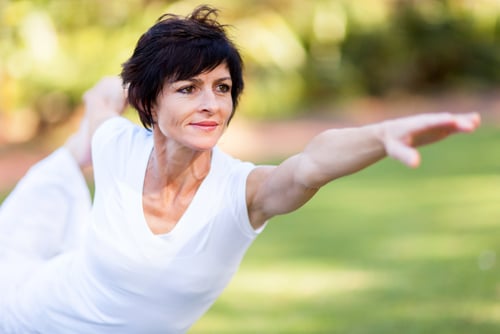
The Importance of Midlife Fitness
In a study published in the Archives of Internal Medicine, researchers looked at Medicare claims for 18,670 participants, both men, and women, over a 26-year period. This group of people had undergone treadmill fitness testing during middle-age, around the age of 50. After adjusting for factors like blood pressure, body mass index, alcohol use and smoking history, they discovered the most fit participants, as measured by their treadmill test, had a lower risk for developing eight medical conditions – heart disease, emphysema, stroke, type 2 diabetes, kidney disease, Alzheimer’s disease, lung cancer and colon cancer over a 26-year period.
That’s a lot of prevention! Although this study doesn’t necessarily show cause and effect, it does suggest that staying fit is a simple and medication-free way to potentially reduce the risk of the most chronic health problems that rob people of their ability to fully enjoy life as they age. According to a 1993 study published in the New England Journal of Medicine, an inactive or sedentary lifestyle is a contributing factor in 23% of deaths due to chronic disease. Pretty sobering, huh?
Health Benefits of Exercise: Other Ways Exercise Improves Health
Did you know that half of all women over the age of 50 and a quarter of all men will have an osteoporosis-related fracture at some point during their life? High-impact exercise and resistance training help to build stronger bones and reduce the risk of osteoporosis. The simple act of muscle moving bone, as when lifting a weight, stimulates bone-producing cells called osteoblasts to churn out more bone tissue to reinforce and protect your bones. Combine that with a calcium-rich diet and adequate amounts of vitamin D and you have a head start at preventing bone loss with age.
What about joint health? By the age of 65, about two-thirds of people have osteoarthritis on x-ray, although not everyone has symptoms. Weak quadriceps muscles increase the risk of knee osteoarthritis. The good news? Strengthening your quadriceps muscles through resistance training helps to prevent osteoarthritis of the knee. Plus, it helps with weight control. Being overweight or obese puts greater stress on joints, causing more loss of cartilage – not to mention resistance training helps to preserve lean body mass with age. Why is that important? There’s an epidemic of sarcopenia among older people. Sarcopenia is the serious age-related loss of muscle mass that puts older people at risk for frailty, falls and disability. Strength-training helps to combat this problem.
Exercise Boosts Mental Health Too
Exercise reduces stress and anxiety and may help to prevent depression. It even helps to ward off age-related memory loss and those “senior moments” that become more common after middle-age. One way it does this is by increasing the volume of a portion of the brain called the hippocampus that’s linked with memory and cognitive function. The hippocampus normally shrinks with age, and exercise, primarily aerobic exercise, reduces hippocampal shrinkage. Aerobic exercise boosts the volume of this portion of the brain even in people who begin exercising later in life. Just goes to show, it’s never too late to get the benefits of exercise.
The Bottom Line?
Who doesn’t want to stay healthy as they age? Exercise and a healthy diet are two of your best defenses against age-related diseases – and it’s never too late to start.
References:
ASPE.hhs.gov. “Physical Activity Fundamental to Preventing Disease”
Arch Intern Med. 2012;172(17):1333-1340.
Diabetes Forecast. December 2012. Page 20.
New England Journal of Medicine. 328(8): 538-45. (1993)
EMedicineHealth. “How Common is Osteoporosis?”
Proc Natl Acad Sci U S A. 2011 February 15; 108(7): 3017–3022.
Related Articles By Cathe:
Does Yoga Improve Bone Health?
8 Health Benefits of Exercise That Happen Right Away
5 Ways Your Workout Should Change after the Age of 50
Why Most People Don’t Exercise – and It’s Not Lack of Time

